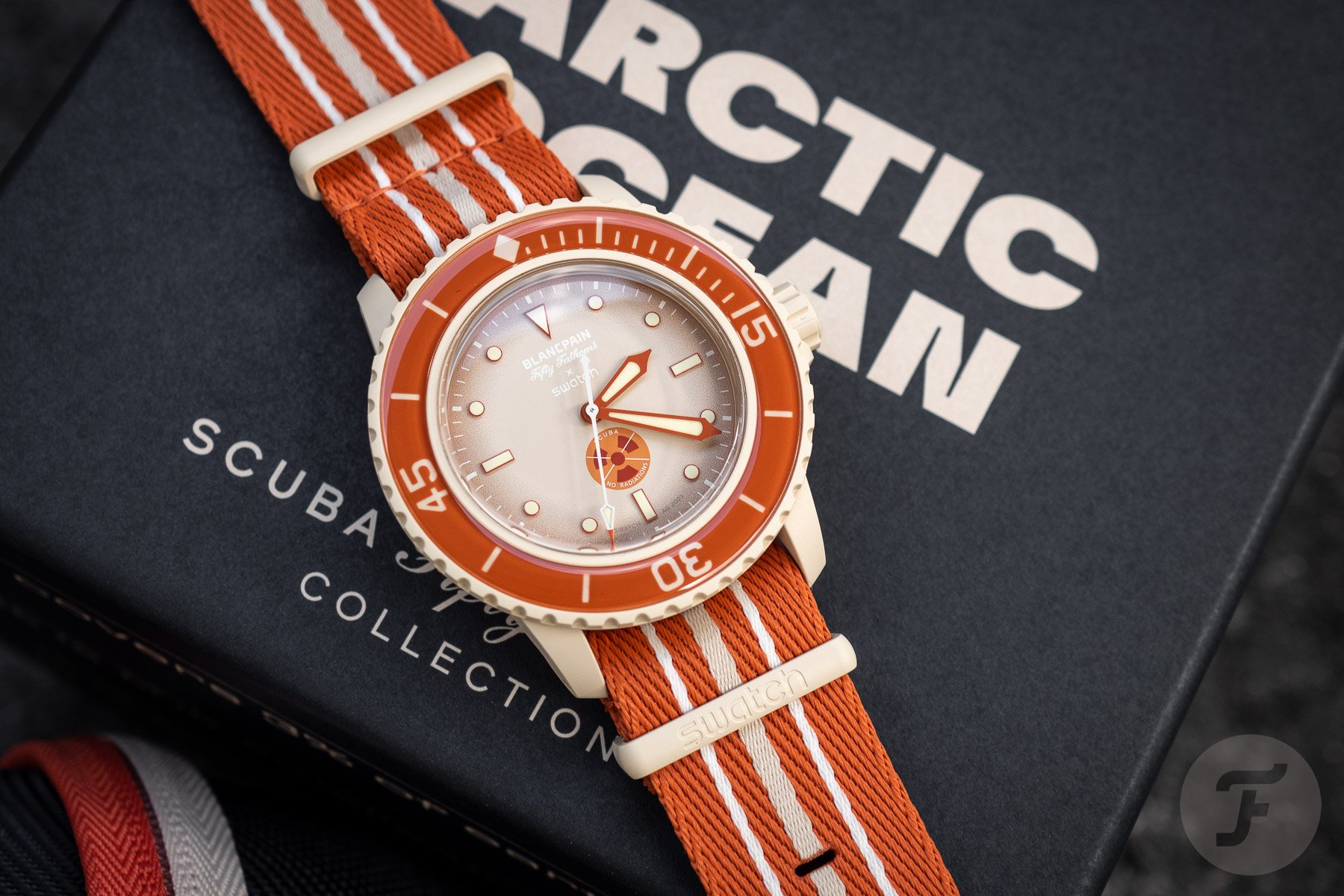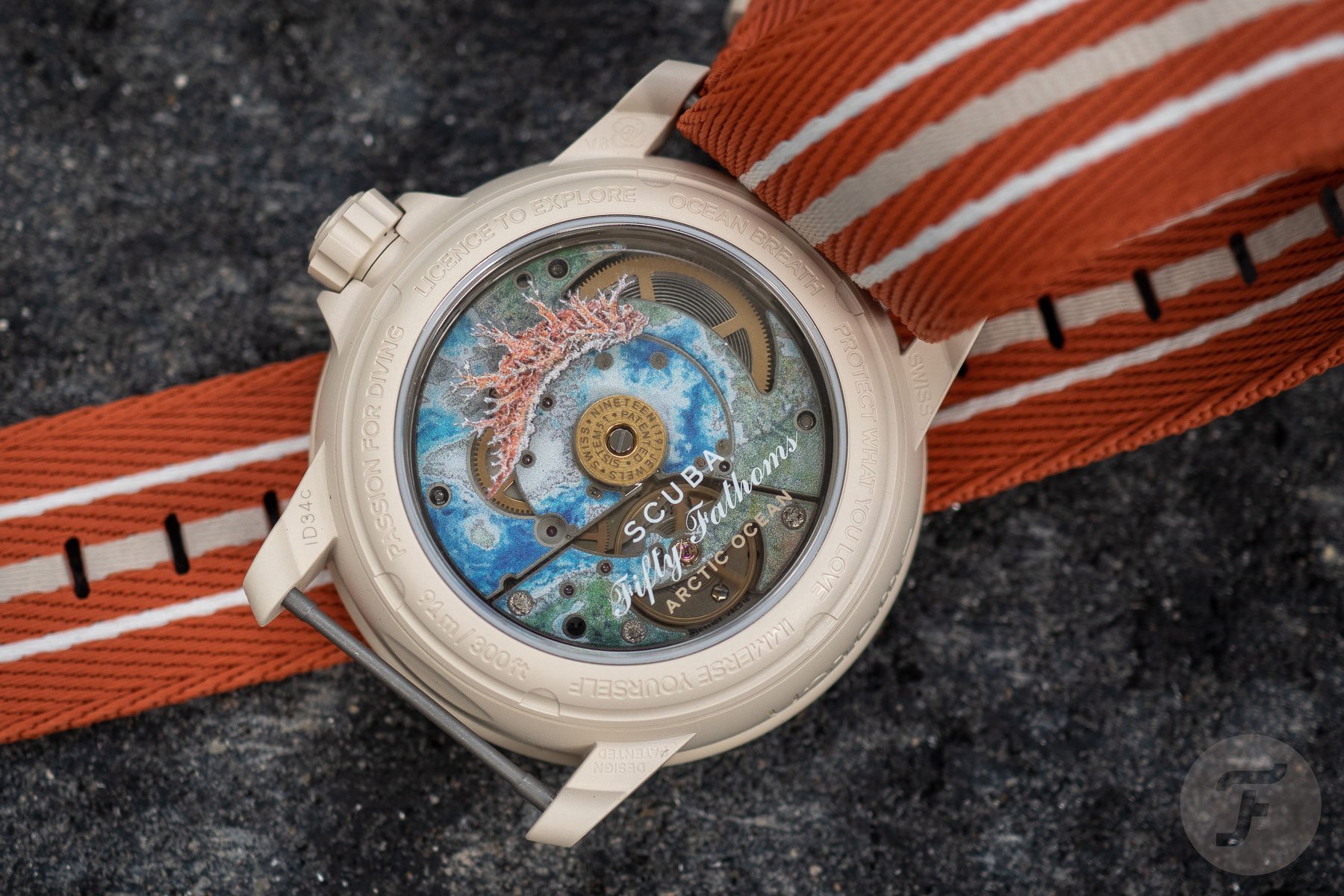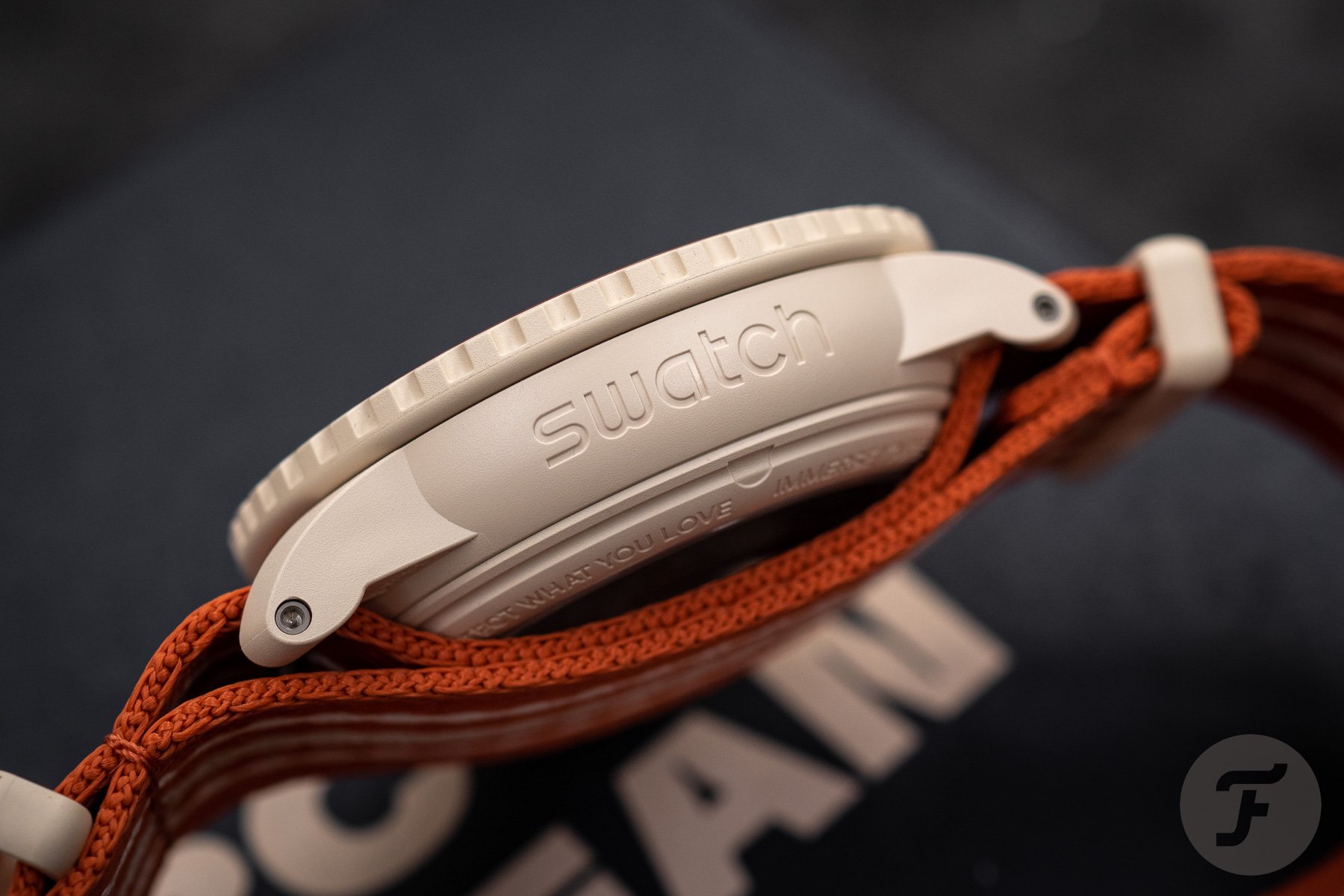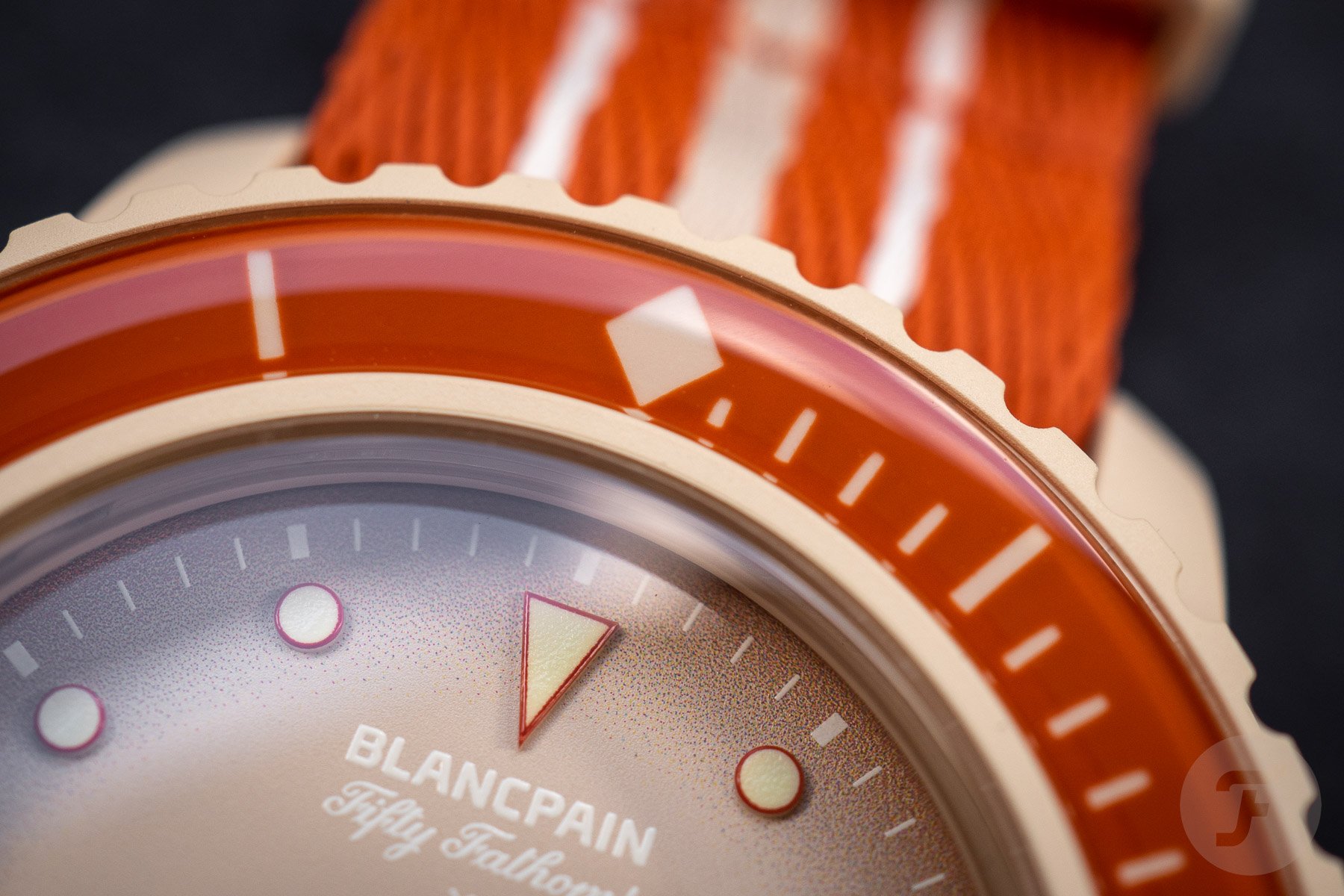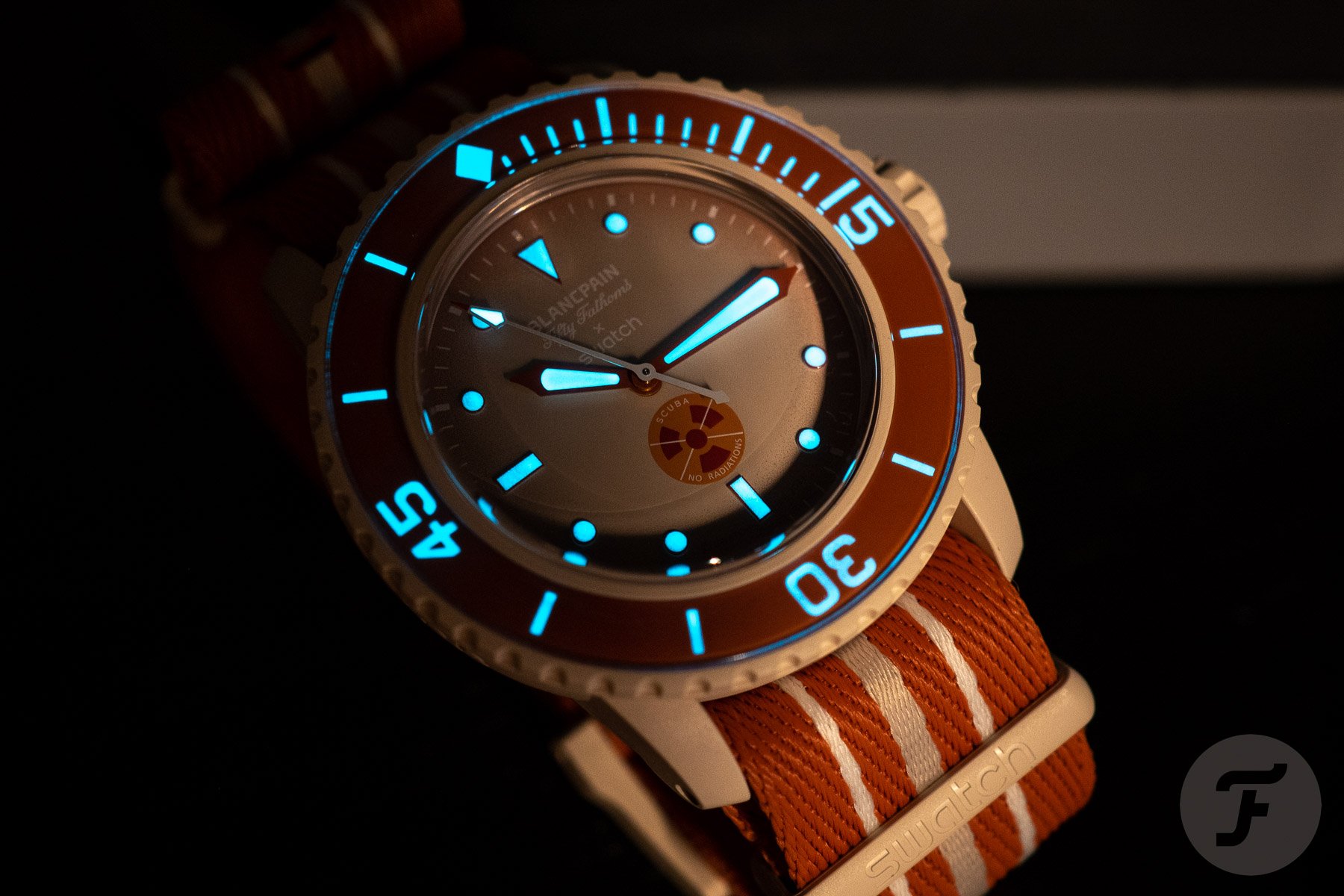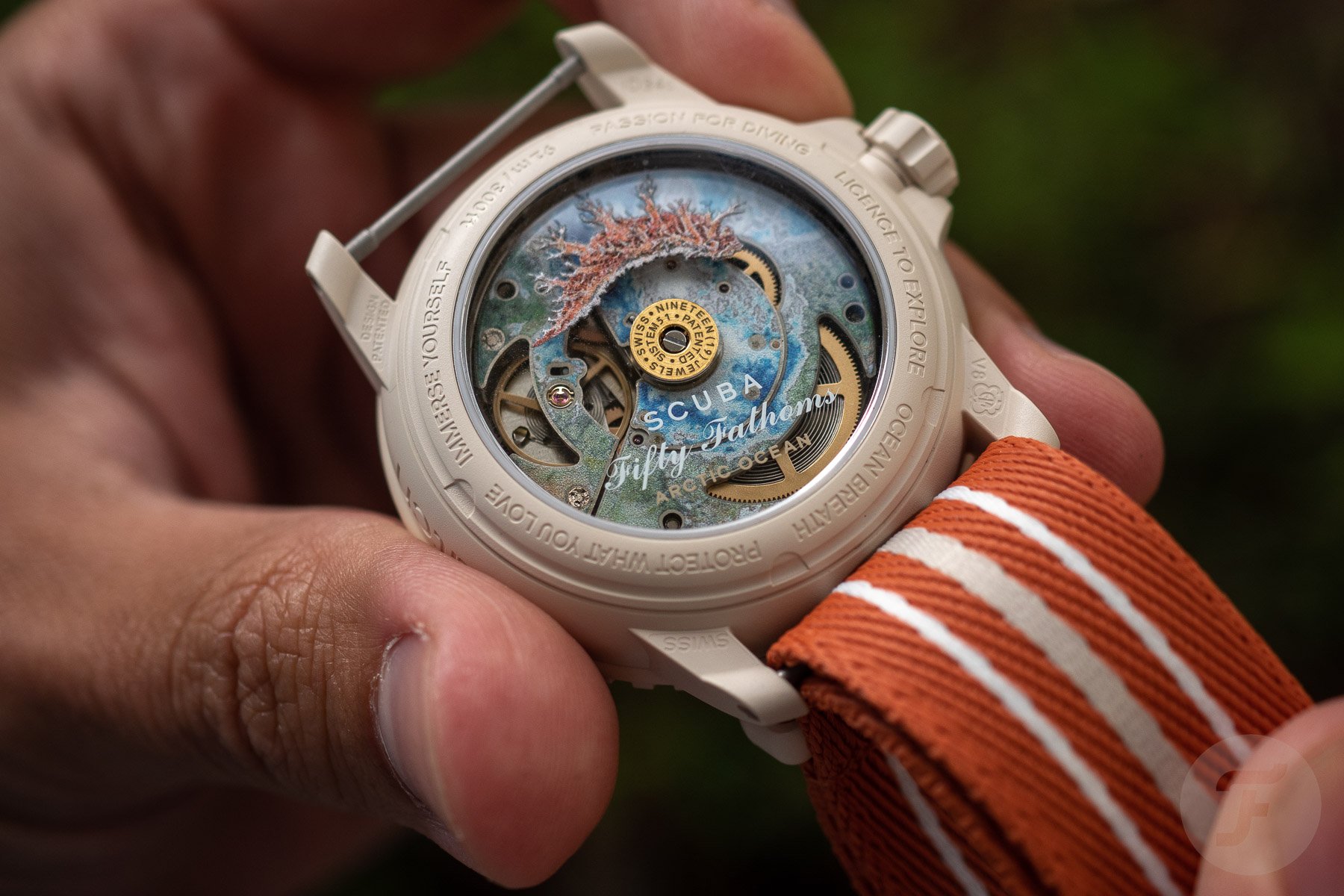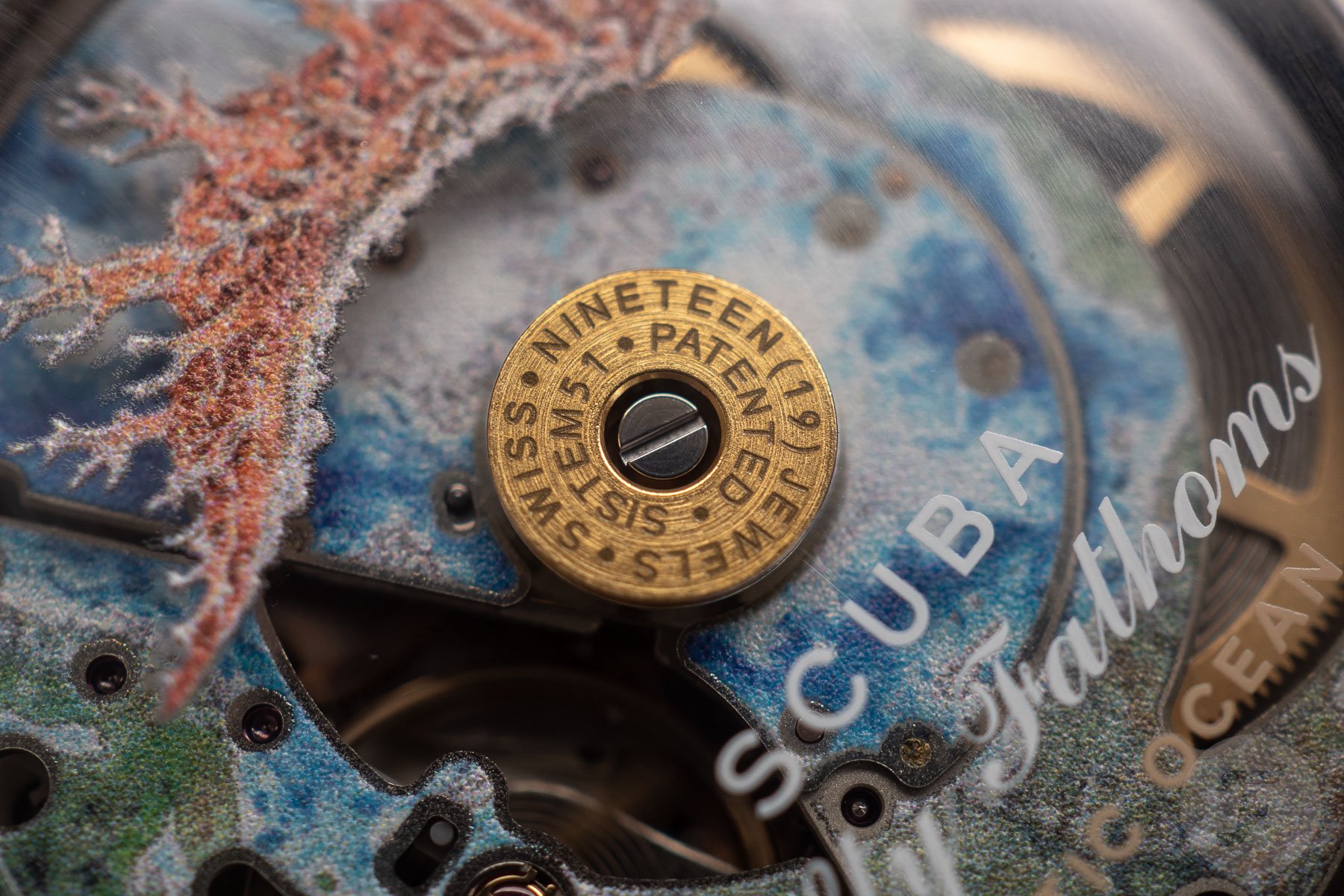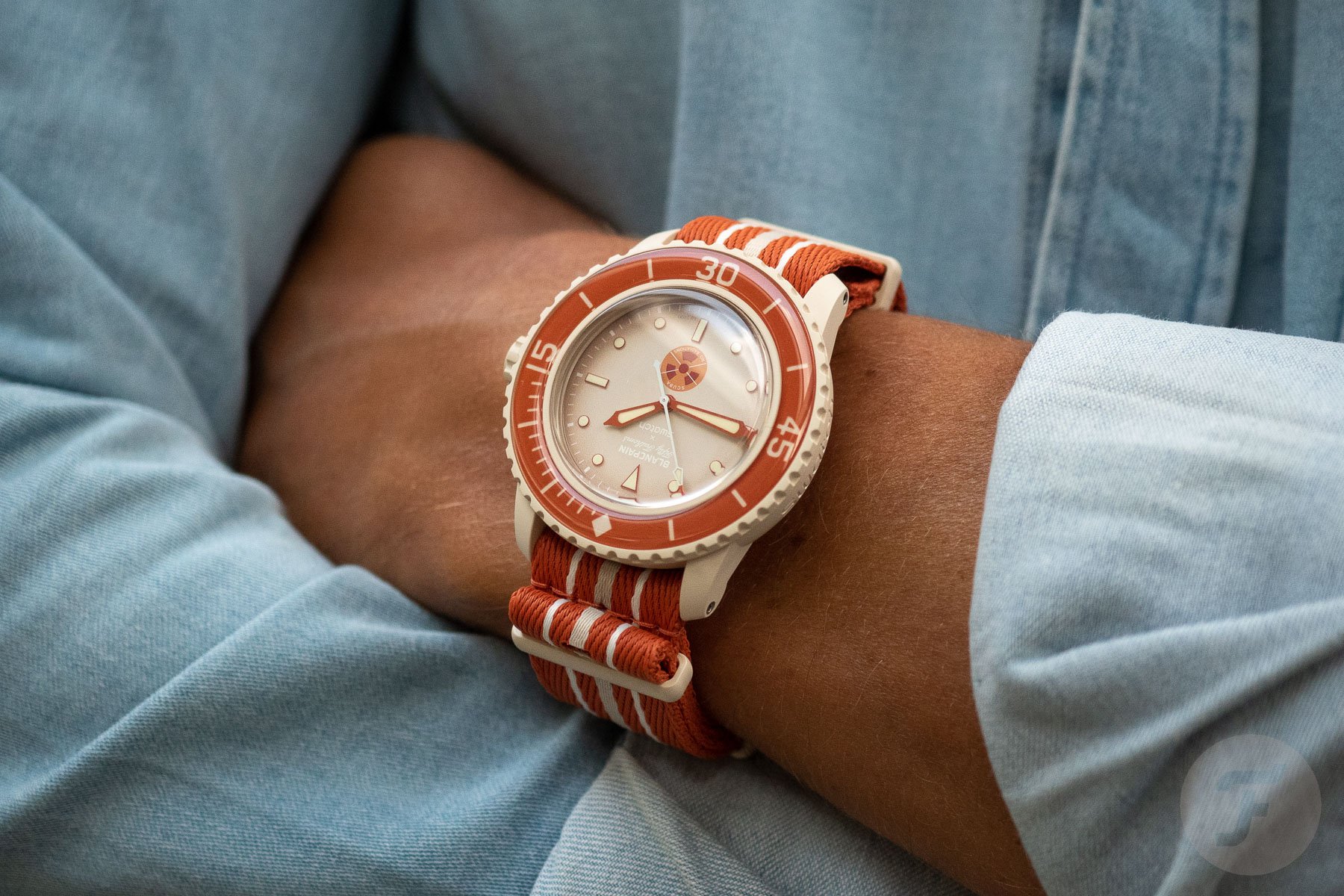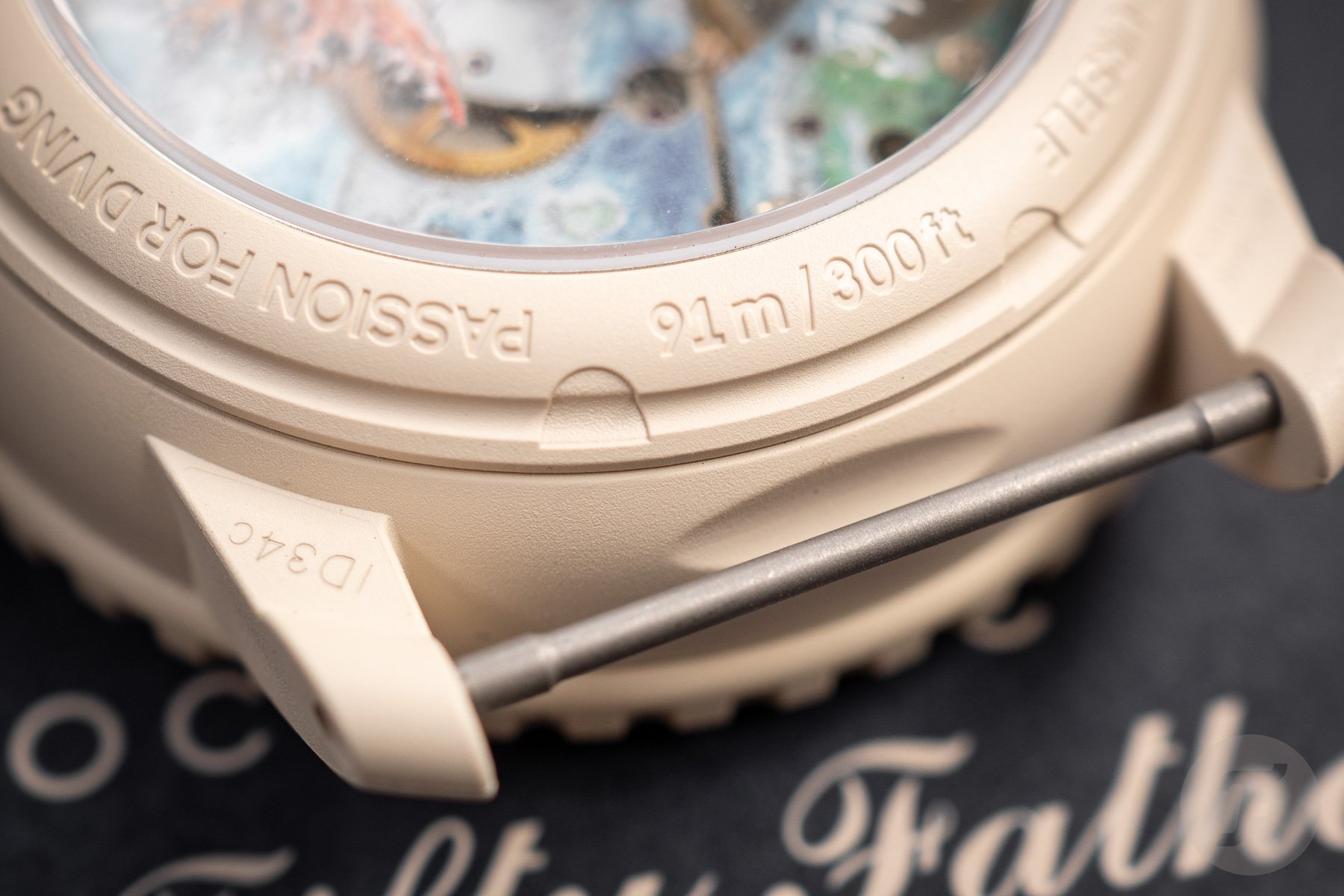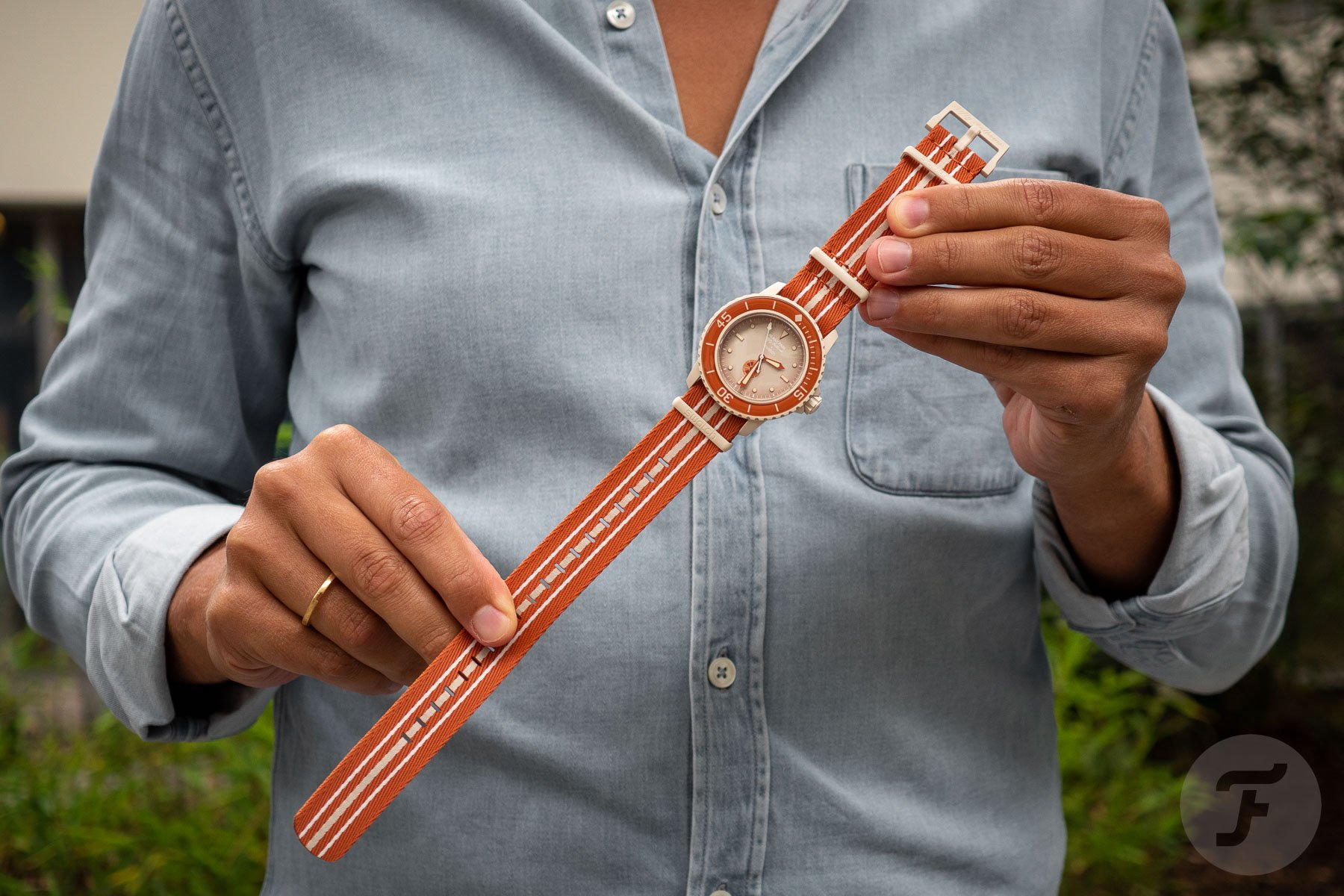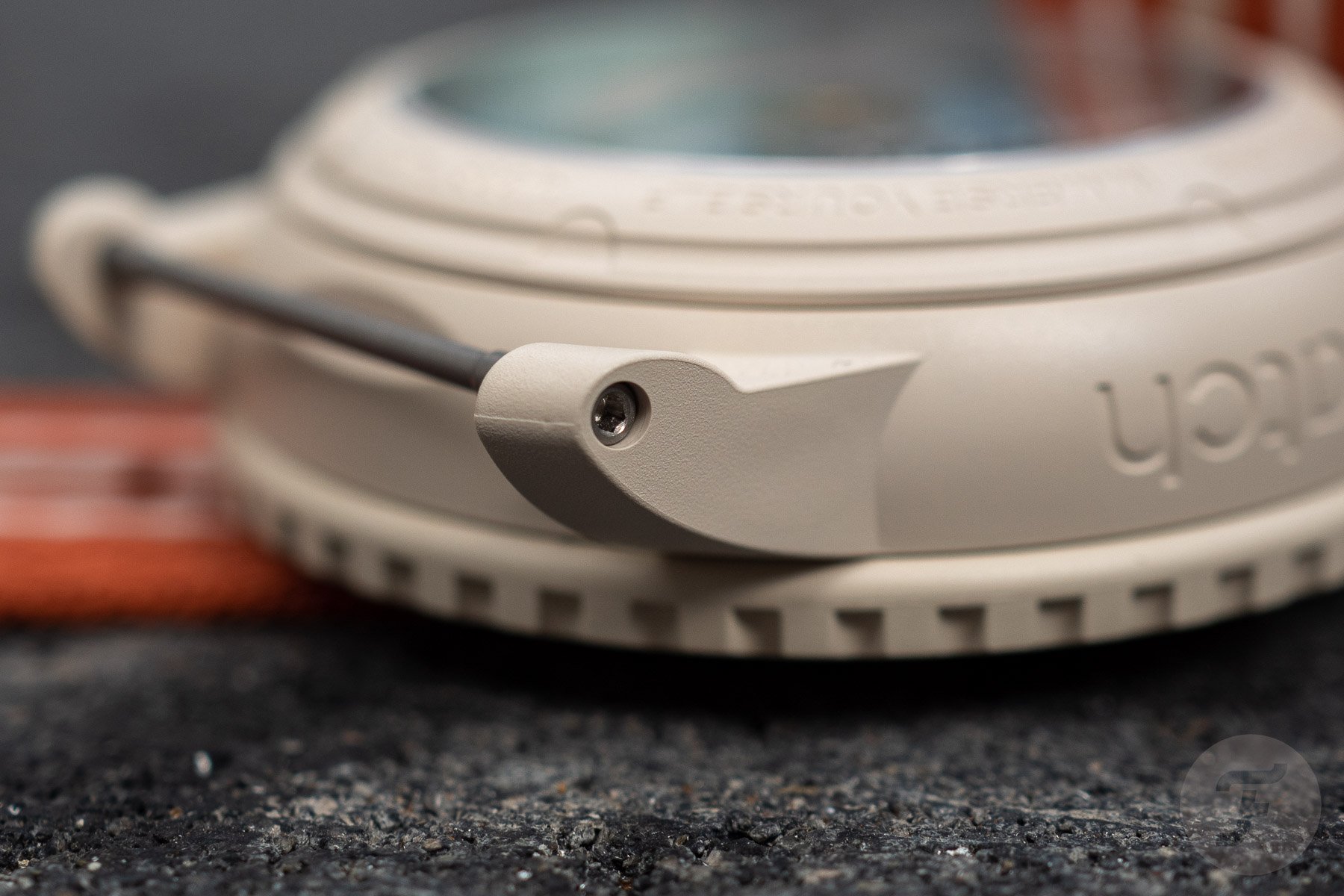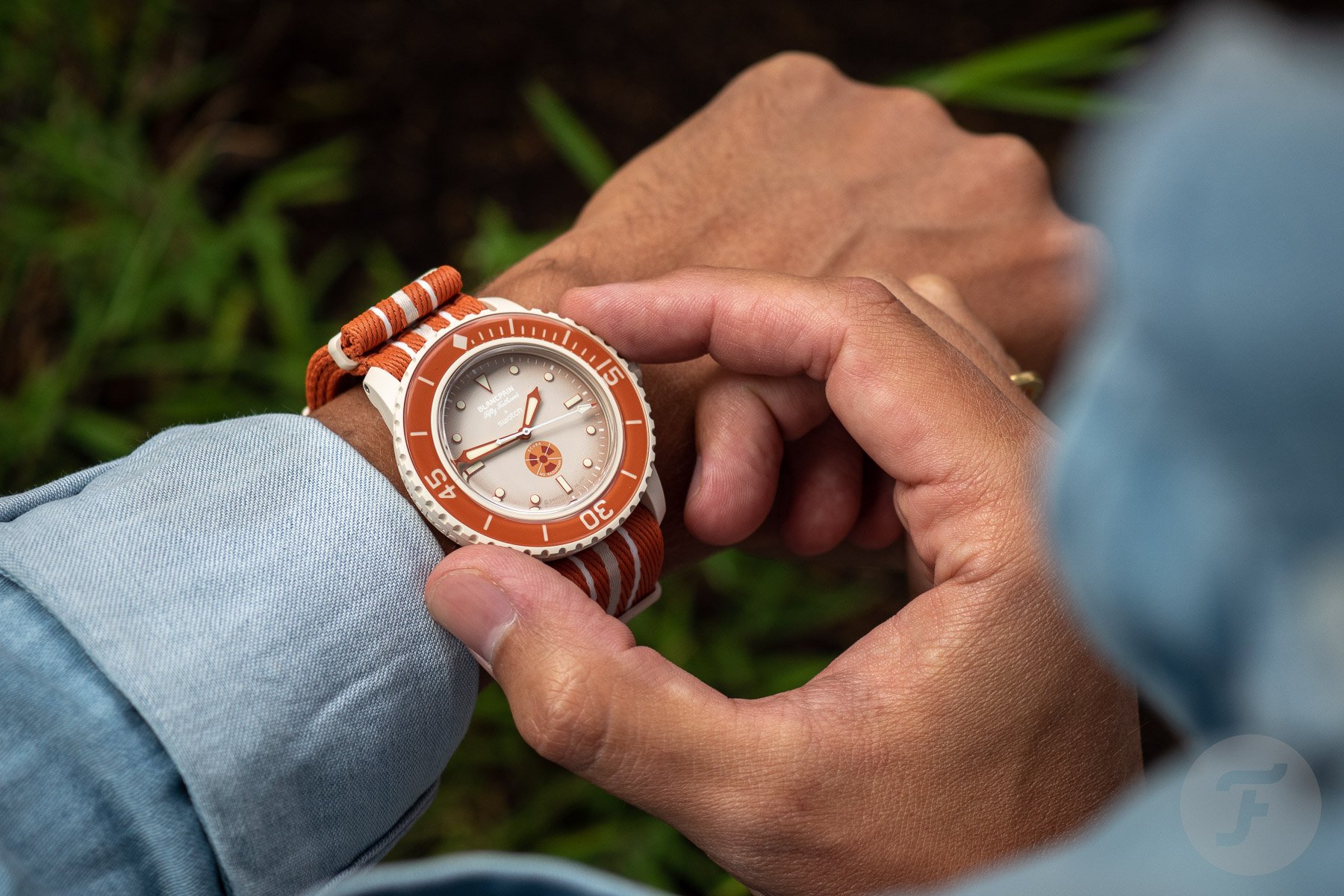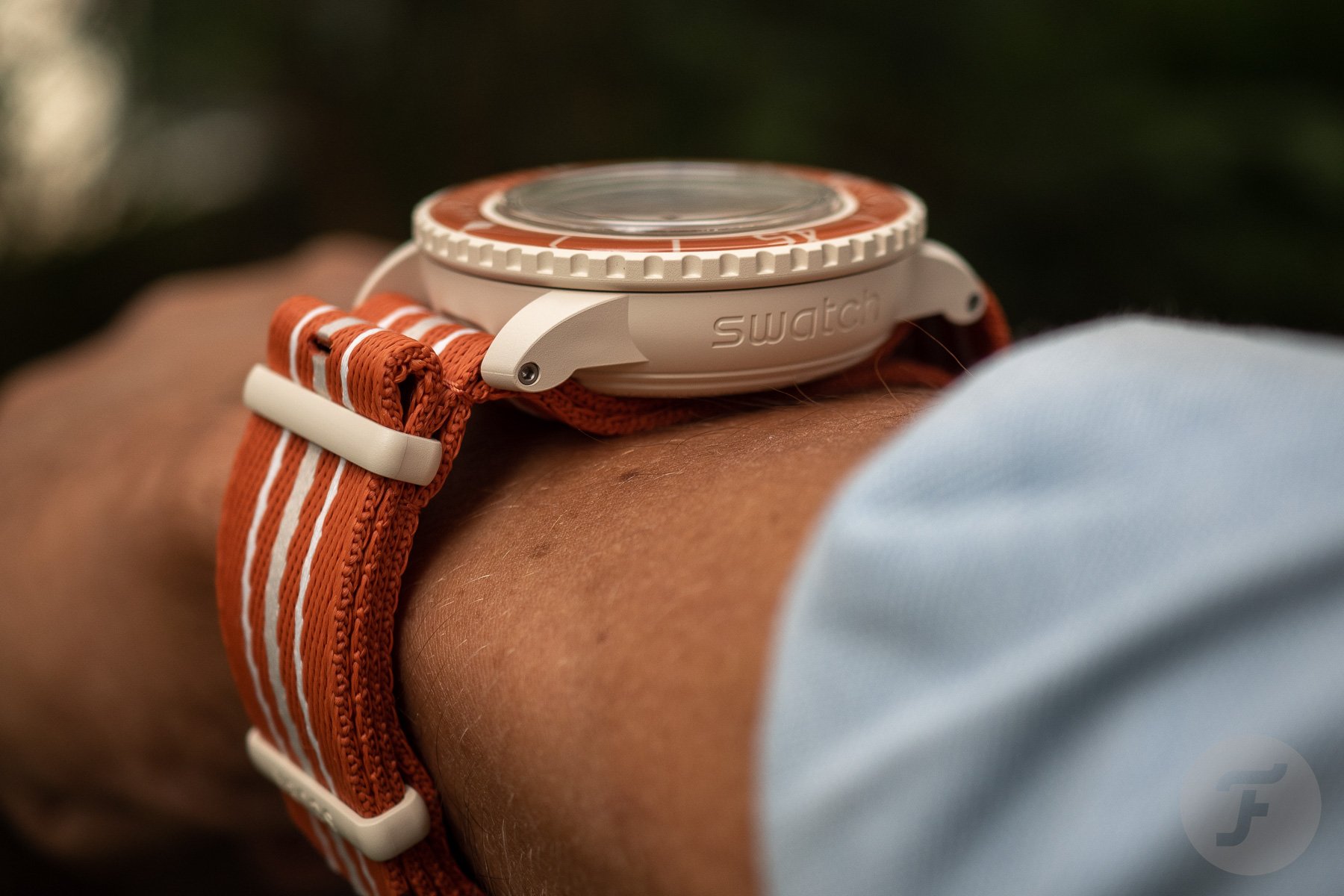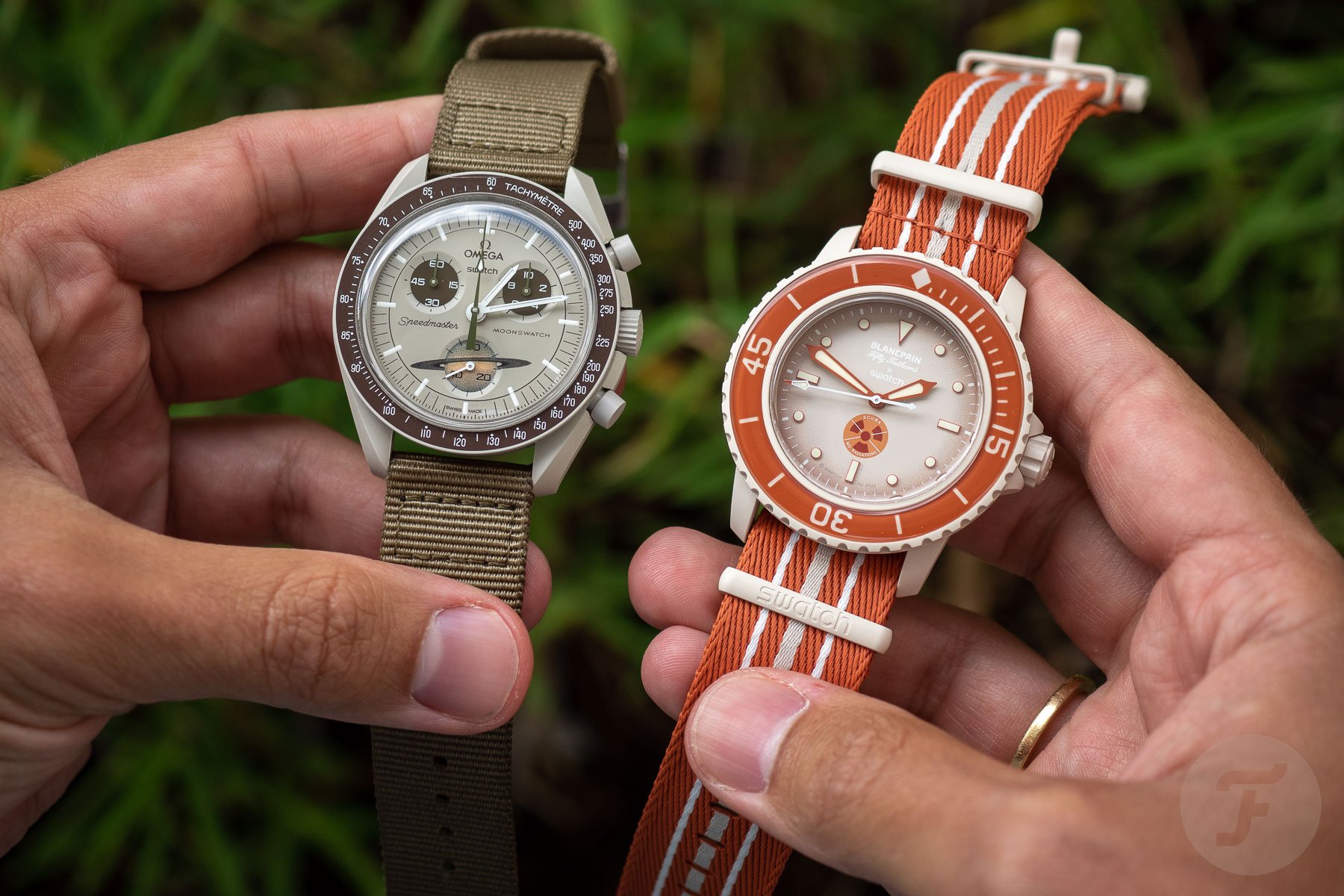Hands-On With The Blancpain × Swatch Bioceramic Scuba Fifty Fathoms Arctic Ocean
I don’t know about you, but I wasn’t immediately convinced when the Blancpain × Swatch Bioceramic Scuba Fifty Fathoms Collection came out a week and a half ago. I noticed that my attention went more toward the hype around it than to the watches themselves. But then, last week at a press event in Barcelona, I sat next to Gregory Kissling, Vice President of Product at Omega, who was also heavily involved with the development of the Scuba Fifty Fathoms. What he told me during that dinner made me a fan of this new Swatch collaboration.
So, while I was in Barcelona, I tried to get one at the city’s Swatch boutique. I stood in (a short) line a couple of times before the shop opened but without any luck. I did get an offer to buy one for €600 from one of the scalpers who had seen me standing in line, but I politely declined. Then I asked my taxi driver to quickly pass by the boutique on my way to the airport, and to my surprise, there were a few of the watches in stock. The Atlantic and Antarctic Ocean versions had already sold out, but luckily, my favorite one, the Arctic, was still available. So that allows me to go hands-on with it, answer your most pressing questions, and tell you what I learned during that dinner last week.
In search of the fourth and the fifth nudibranchs
It was quite clear that Blancpain was going to be one of Swatch’s next sparring partners. Launching this series during the 70th anniversary of the Fifty Fathoms makes a lot of sense. Besides, RJ already saw a Bioceramic Bathyscaphe case when he first saw the MoonSwatch at Omega in Biel last year. But, of course, we didn’t know exactly what it was going to look like. Gregory told me that the project team consisted of about ten people who worked very closely together in a separate office — nobody else within Swatch or Blancpain knew what was going on in there.
Marc Hayek, CEO of Blancpain, who was also a part of the project team, was the one who came up with the idea of the nudibranchs. However, it was quite hard to find nudibranchs that could represent both the Arctic and Antarctic Oceans. Therefore, the project team reached out to Laurent Ballesta, who is a marine biologist, underwater photographer (three-time Wildlife Photographer of the Year award winner), pioneer deep diver, and part of Blancpain’s conservation efforts within the Gombessa scientific research expeditions. He eventually suggested the Dendronotus frondosus for the Arctic and the Tritoniella belli for the Antarctic Ocean.
A Bioceramic version of the Fifty Fathoms 70th Anniversary Series I case
The 42.3mm case of the Blancpain × Swatch Bioceramic Scuba Fifty Fathoms is almost identical to the one of the stainless steel Blancpain Fifty Fathoms 70th Anniversary Series I. It’s 0.1mm thicker at 14.4mm, and its lug-to-lug span is also 1mm longer at 48mm. The crown is a push-pull type and features a double O-ring to improve water resistance. This is, in fact, one of Blancpain’s innovations, for which the brand filed a patent application in early 1954. The bezel on the Bioceramic Fifty Fathoms uses the same mechanics as on the stainless steel version. I must say, it feels quite similar to the bezel action on the 38mm Bathyscaphe that I used to own.
The lumed bezel insert is made out of the same bio-sourced crystal that also covers the dial. Both crystals have been coated to make them more resistant to scratches. That coating, which is also being used on car dashboards, was already being tested for the MoonSwatch but wasn’t ready yet when it went into production. Interestingly, the crystal on the case back is made out of sapphire. If it had been the same bio-sourced crystal as on the front, the watch would’ve become even thicker than it already is. Then we get to what’s in between all these crystals, and I’ll start with the dial.
The gradient “no-rad” dial
The hour markers on the dial consist of six layers of Super-LumiNova. This is to ensure that the glow lasts for at least 120 minutes in the dark. The markers’ edges have also been painted to match the overall look of the watch and the sword hands. The rest of the details — the logo, minute track, “no-rad” symbol, and gradient — have been printed onto the dial. Both the Arctic and Antarctic versions feature a font that Blancpain used in the past, whereas the other three versions use the current font for the logo. The gradient appears to match the color of the hands and the bezel insert, but when you look closely, you’ll see it consists of numerous tiny multicolored dots.
The “Sistem47” movement
When you turn the watch over — and the NATO strap is not on it — you’ll see the decorated rotor and movement. Actual drawings were digitalized first and then printed onto the transparent rotor and the movement plates. The rotor moves in both directions but only winds the movement when it rotates clockwise. The funny thing is that the crown should be turned counterclockwise to wind the watch. As this is my first watch with a Sistem51 movement, it took me a minute to figure this out.
Usually, when a Swatch watch doesn’t have a date window, the date wheel is still spinning underneath the dial. Well, that’s not the case on the Arctic and Antarctic versions of the Scuba Fifty Fathoms. That means they contain only 47 parts instead of the standard 51. Maybe we should call this movement the “Sistem47” instead.
Specs and (non-)serviceability
The fully mass-produced automatic movement runs at a 21,600vph frequency and offers a power reserve of 90 hours. It also features a Nivachron hairspring, which makes the movement resistant to magnetic fields. Gregory also told me that it’s quite accurate. When I put the watch horizontally on the timegrapher in the Fratello office, I was impressed. It was running at around ±0 seconds per day. But when I changed its orientation, the deviation quickly started to increase. It could be that the movements have only been checked in one position, then.
I’m not that bothered by that lack of accuracy because I swap watches every day. However, what bothers me a bit is the fact that the Scuba Fifty Fathoms cannot receive a movement swap. I know that due to its simplified construction, the Sistem51 movements cannot be serviced. But because the case back is glued down to provide water resistance to fifty fathoms (91.4m, which is 100m in practice), it can’t be opened to perform a movement swap when needed. There are some rumors that it will be possible in the future, but Gregory simply told us it’s not possible.
The striped NATO strap
The striped NATO strap on the Scuba Fifty Fathoms is made from recycled fishing nets. When I first saw the straps in the press material, I wasn’t a big fan. I usually prefer plain straps, and I thought the stripes were printed onto these. In real life, however, the straps match the designs of the watches very well, and the stripes are woven into them. Gregory also told me that they added extra holes to make it suitable for a large variety of wrist sizes. From what I could measure, it should be able to accommodate wrists anywhere from 13cm to 24cm in circumference.
The annoying thing here is the unusual 21.2mm lug spacing. On the stainless steel Fifty Fathoms, the 21.5mm measurement already sounds a bit awkward, but 21.2mm seems even more random. The strap that comes with the watch perfectly fits in between the lugs, of course. It becomes more problematic when you want to swap that strap for something else, though. A 21mm strap is probably the best option here, but there will always be a little gap along the sides. If you want to put on something other than a NATO strap, you’ll have to use a set of 0.9mm hex keys. This is because the Scuba Fifty Fathoms uses the same semi-fixed bars as the stainless steel model.
The Scuba Fifty Fathoms Arctic Ocean on the wrist
When I first held the Scuba Fifty Fathoms in the Swatch boutique, I was just as impressed as when I first held the MoonSwatch. It’s cool to see a synthetic version of a thing you’re so used to seeing in stainless steel. The case construction, the bezel, and the crown all feel solid. In that sense, it’s a shame that the watch will become useless when the movement breaks down. I won’t wear this watch a lot, though, so I hope I’ll be able to enjoy it for a few more years.
Compared to the MoonSwatch, it’s substantially thicker, especially with the double-layer NATO strap that goes underneath. This makes the entire thing stand almost 17.4mm tall on your wrist. That’s a lot of bulk for a guy who usually likes his watches slim and slender. On the other hand, at 33 grams, the watch is also very light, so it doesn’t move around a lot when it’s on the wrist. Besides, the bulky character also adds to the fun factor of the Scuba Fifty Fathoms, a crucial aspect of a watch that shouldn’t be taken too seriously.
Any other questions?
All in all, I’m very happy that I was able to pick this one up. Sure, €390 might be a bit steep for a mechanical watch that you eventually won’t be able to use or service. But when I look at the story behind it and the development that went into this watch, I still think it’s quite a fair price. As I said, I probably won’t be wearing this one a whole lot, just like my MoonSwatch. But when I do, I’m sure that I’ll enjoy it to the fullest.
What are your thoughts on the Blancpain × Swatch Bioceramic Scuba Fifty Fathoms models? Have you already bought one, are you going to wait for the hype to blow over first, or are they not really your thing? Let me know in the comments below. And if you have any questions, also make sure to post those down below.

